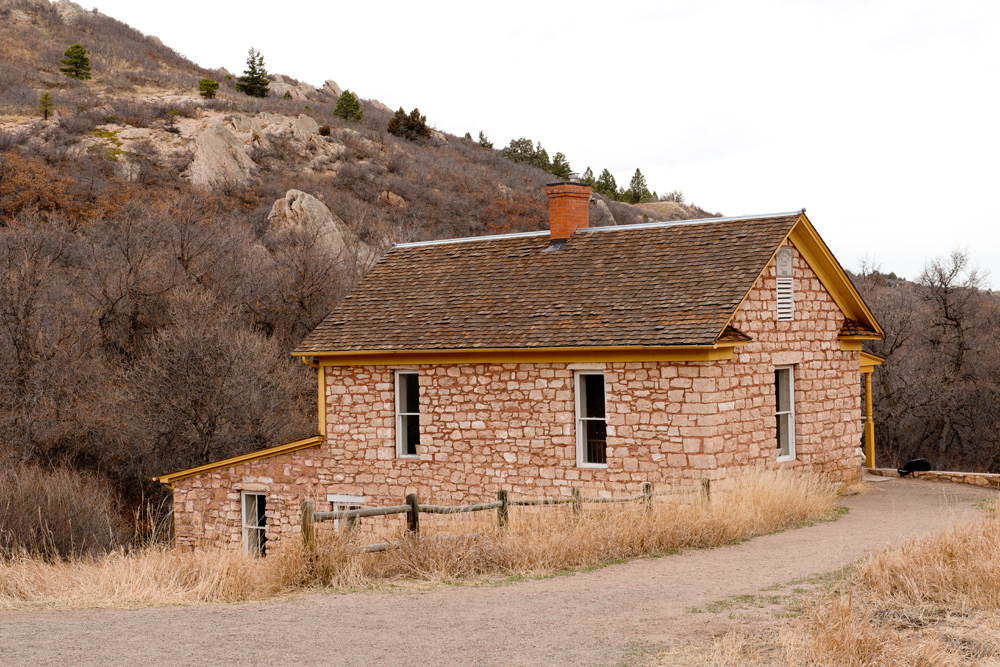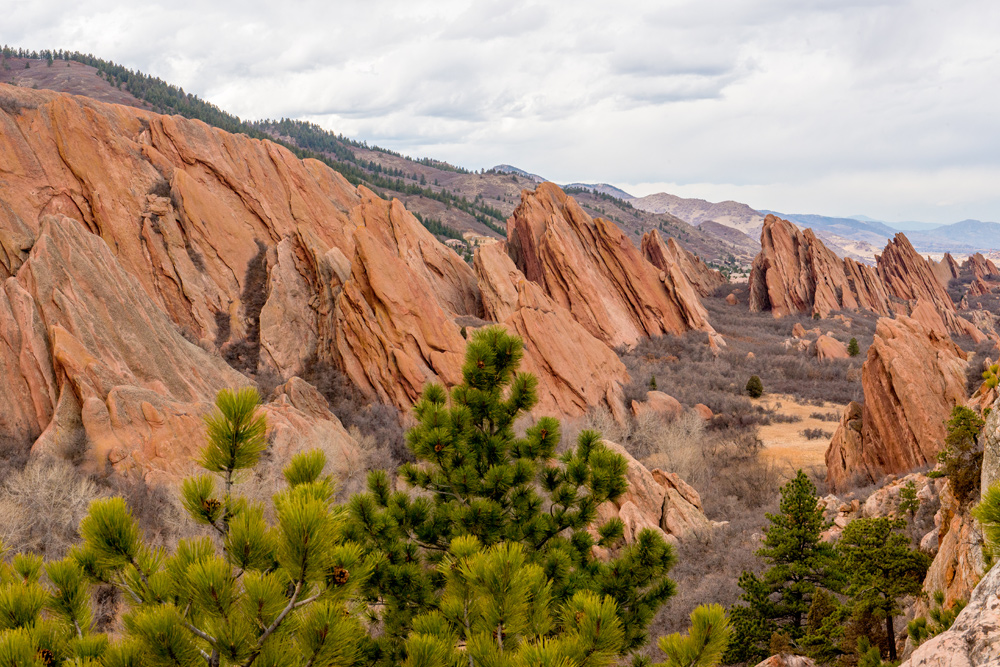Roxborough State Park Archaeological District
Full Article
The Roxborough State Park Archaeological District contains one historic homestead and a variety of prehistoric rockshelters and campsites dating back to at least the Early Archaic period (5500–3000 BCE). It is located at the southern end of the valley between the hogback ridge and the foothills, about twenty-five miles southwest of Denver. The Denver chapter of the Colorado Archaeological Society (CAS) performed a survey of the district in 1977–78, after the establishment of Roxborough State Park (4751 Roxborough Dr, Littleton, CO 80125).
Before the State Park
When members of Stephen Long’s expedition arrived at the mouth of South Platte Canyon on July 6, 1820, they saw “a range of naked and almost perpendicular rocks rising abruptly to a height of 150 to 200 feet.” Those rocks were the Fountain formation outcrops in what is now Roxborough State Park in Douglas County. Frederick Hayden’s team surveyed the area in the 1870s, and homesteaders in the 1880s called the area “Washington Park” because one of the large outcrops resembled the profile of George Washington.
 In 1889 Henry S. Persse acquired land from homesteader Edward McKenzie Griffith. Persse probably renamed the area “Roxborough” after the part of Ireland from which his family had emigrated. In 1902 he formed the Roxborough Land Company and began to buy more land, with the goal of developing the area into a high-class resort. That never happened, but Persse’s land did become a day-trip destination for Denver friends, including mayors Robert Speer and Benjamin Stapleton. Some, including Speer, thought the area should become a public park, like Garden of the Gods in Colorado Springs.
In 1889 Henry S. Persse acquired land from homesteader Edward McKenzie Griffith. Persse probably renamed the area “Roxborough” after the part of Ireland from which his family had emigrated. In 1902 he formed the Roxborough Land Company and began to buy more land, with the goal of developing the area into a high-class resort. That never happened, but Persse’s land did become a day-trip destination for Denver friends, including mayors Robert Speer and Benjamin Stapleton. Some, including Speer, thought the area should become a public park, like Garden of the Gods in Colorado Springs.
In the 1920s, the Persses sold their Roxborough land to the Helmer family, which had been farming and ranching adjacent land east of the hogback and north of Roxborough since 1880. The area continued to be used for ranching for another fifty years. The remains of Persse Place include a stone house, a log barn, two log sheds, and the foundation of a bunkhouse.
Archaeological Investigations
In 1975 the Colorado Division of Parks and Outdoor Recreation (now Colorado Parks and Wildlife) bought 500 acres of land in the area to establish Roxborough State Park. By that time, excavations at Magic Mountain, LoDaisKa, and Ken-Caryl South Valley had showed that the hogback valley was a popular spot for prehistoric occupations in the Archaic and Ceramic periods because of its mild climate, large rock outcrops, diverse plant and animal resources, and convenient location between the mountains and the plains.
After the establishment of Roxborough State Park, the Office of the State Archaeologist and the Denver chapter of the CAS performed a cultural resources survey of the park’s boundaries in 1977–78 as part of the twelve-year process of developing the park for public use.
One survey of the Roxborough area had already been carried out in 1971 by Byron Olson and a team of University of Denver students, who found five sites with deposits similar to those at Magic Mountain. The CAS survey recorded a much higher density of prehistoric sites: three rockshelters at the base of Fountain formation outcrops, ten open camps on south- and west-facing slopes near Willow Creek and Little Willow Creek, and six stone quarries on the Dakota hogback ridge. Little excavation was performed at the sites, but the area would have been an attractive winter camp, perhaps as part of an annual migration that included summers spent in the high mountains. It is also possible that some groups lived year-round in the valley and the nearby plains, using east-facing shelters to escape the sun in the summer and south- or southwest-facing shelters to gather warmth in the winter.
The Roxborough survey’s findings aligned with the foothills chronology derived from earlier excavations at other hogback valley sites. The survey revealed artifacts dating from the Early Archaic period to the Early Ceramic period (150–1150 CE). Based on what has been found at other hogback valley sites, the archaeologists suspected that detailed excavations in the area would uncover evidence of occupations ranging from the Paleo-Indian period (before 6000 BCE) to the Middle Ceramic period (1150–1540 CE).
Today
 In the decade after it was established, Roxborough State Park’s wealth of natural and cultural resources earned it designations as a State Natural Area (1979), a National Natural Landmark (1980), and a National Archaeological District (1983). Meanwhile, as the Denver metropolitan area rapidly expanded south, a residential neighborhood, a golf course, and a water treatment plant were being developed near the park. To preserve Roxborough’s fragile resources from heavy visitor use, Colorado Parks and Wildlife decided to manage the park as a natural area. Visitors would be restricted to the parking lot, the visitor center, and a few well-defined trail loops, with no overnight camping and no pets allowed.
In the decade after it was established, Roxborough State Park’s wealth of natural and cultural resources earned it designations as a State Natural Area (1979), a National Natural Landmark (1980), and a National Archaeological District (1983). Meanwhile, as the Denver metropolitan area rapidly expanded south, a residential neighborhood, a golf course, and a water treatment plant were being developed near the park. To preserve Roxborough’s fragile resources from heavy visitor use, Colorado Parks and Wildlife decided to manage the park as a natural area. Visitors would be restricted to the parking lot, the visitor center, and a few well-defined trail loops, with no overnight camping and no pets allowed.
On May 15, 1987, Roxborough State Park opened to the public. Today the park preserves nearly 3,300 acres—including the Roxborough State Park Archaeological District—on the southwestern edge of the Denver metropolitan area. In 2016 the park received the History Colorado Hart Archaeology Award for the work it has done since 2011 to highlight the area’s archaeological history for visitors.










